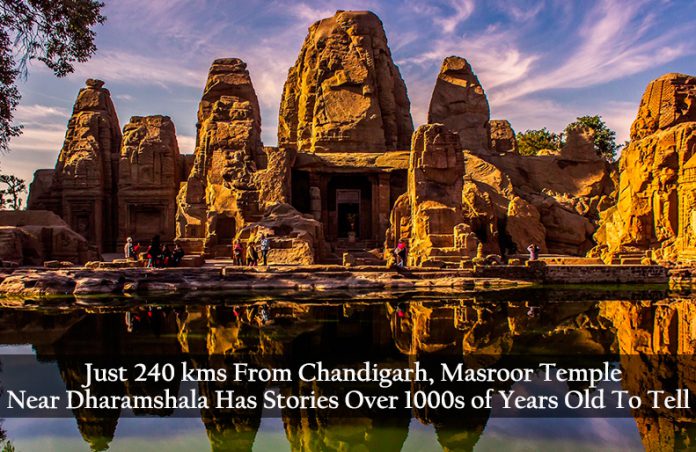Less than 240 kms from Chandigarh, nestled in the gorgeous Kangra valley, did you know there’s a least explored and appreciated leaf of our heritage that stands in all its magnificence and glory since past 1000s of years?
Masroor Rock Cut Temple!
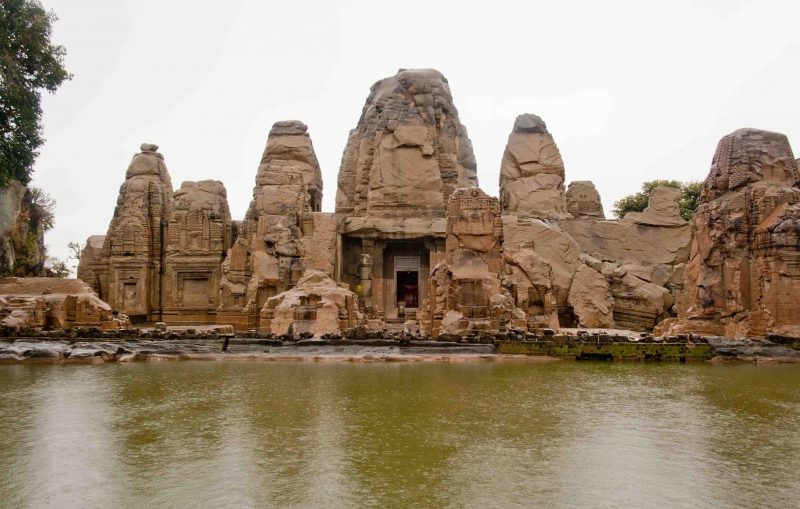
Fascinating legends surrounding the temple
Since there’s no epigraphic record to ascertain the exact period of its construction, many fascinating legends shroud the temple. And the legends only come to add to the sheer glory and majesty of the temple.
The Pandavas Story
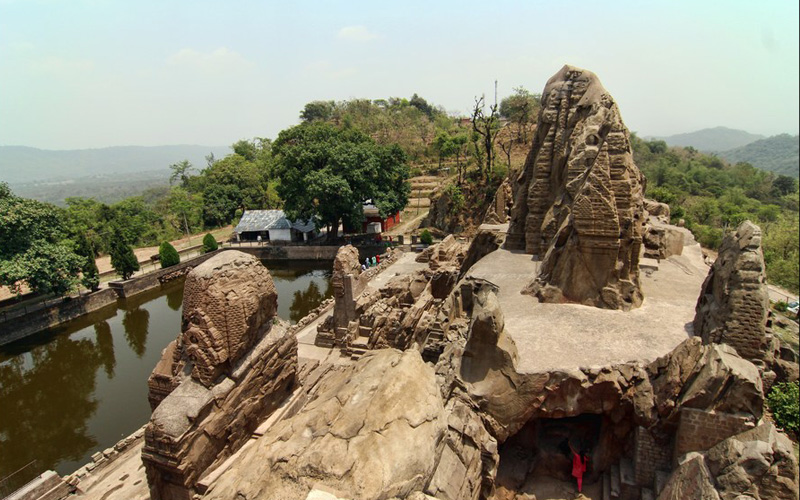
It is said that the Pandavas of Mahabharata during their exile from their kingdom constructed this temple and lived here during their agyatvaas. As their identity was revealed, they had to leave the place leaving the temple construction work mid-way. And temple complex still has unfinished parts.
The pond in front of the complex has a mythical link to Draupadi. It is stated that it was built for her exclusive use for ablutions.
Jalandhara Kings
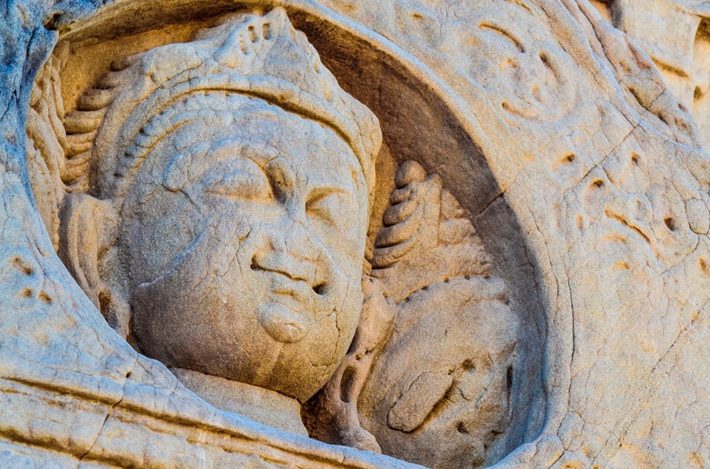
The gigantic structure of the temple confirms one thing that it was no work of local chieftains. Only a prosperous kingdom’s king can afford to build it. The area around the temple complex was also known to have many caves and relics indicating large settlements. It is said that kings of Jalandhar moved to Masroor from the plains of present day Punjab and established their capital here. This is substantiated by the fact that the Gaddis of the lower Kangra district still know this place as Jalandhara or Jalandhars. When the kings moved to more secure Kangra fort, the temple was left incomplete.
Peculiar Architectural Similarities with Elephant Temples in Mumbai & Angkor Wat in Cambodia

Elephant temples
Curiously enough, Masroor in Himalayas has many similarities with Elephant temples near Mumbai in Maharashtra as rock-cut temple.
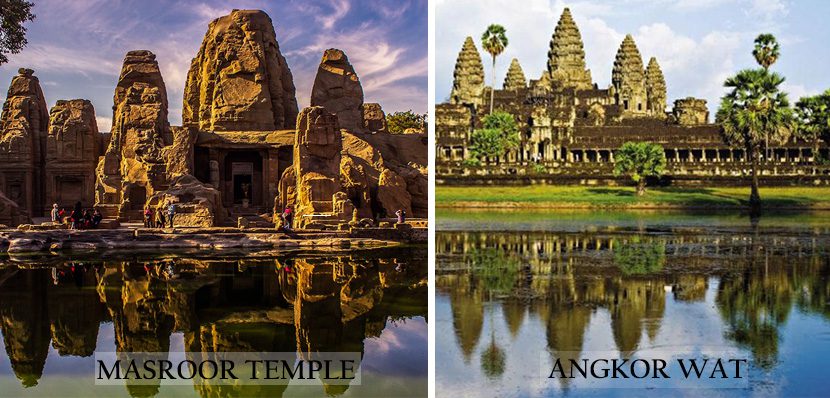
Angkor Wat in Cambodia
Not just within India, even Angkor Wat in Cambodia is much similar to Masroor temple. This comparison has opened up an issue of further historical research on the aspect of any “regional inter dependencies or cultural exchange as a catalyst in the construction of both the temple complexes”.
Kangra Earthquake 1905
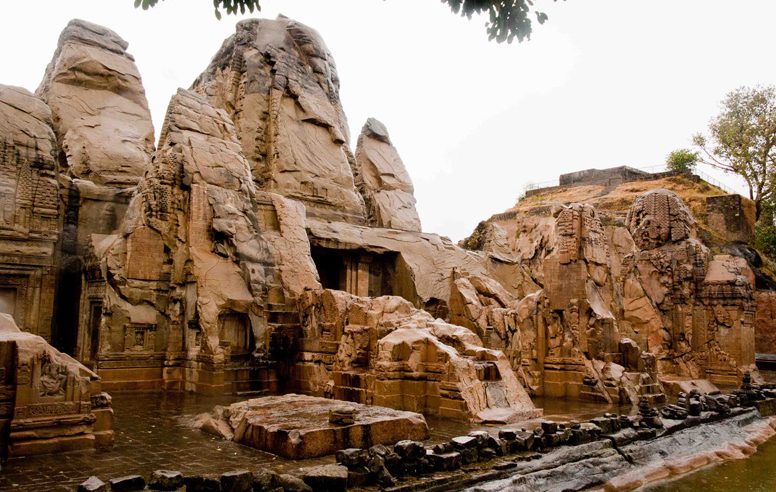
The temple faced remarkable damage during the famous Kangra earthquake in 1905. Substantial part of the temples were damaged resulting in many broken parts seen lying scattered around the temple. A particular structural part of the temple which is not part of the main monolithic temple complex suffered severe damage to most of its circular columns which resulted in collapse of the mandapa and the roof (probably made of local timber) of the structure
Major attractions:
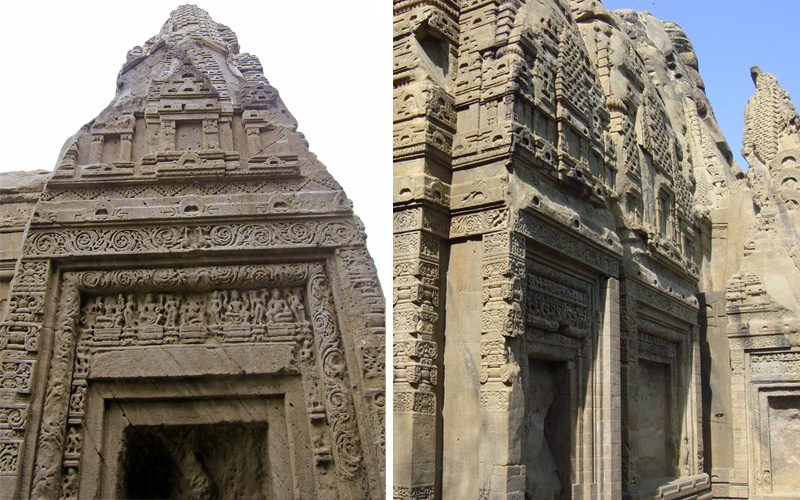
- Monolithic rock cut temple (carved out of one single stone).
- Estimated to be built in 6th or 7th century.
- Popularly known as Himalayan Pyramid.
- In the backdrop of the Dhauladar Range and Beas River valley, the temple is located at the highest point of a local hill feature. Imagine the view of the Himalayas!
- The temple is constructed in shikhara (tall towers) in peculiar classic style of Indian architecture.
- The beautiful carvings on the face of the temple which shows the Vaishvanite influence.
Location:

The Masroor Rock Cut Temple is in Kangra Valley in the Dehra Gopipur tehsil, just 35 km from Dharamshala. It is approachable from a new 2-km road built from Pir Bindli near Lunj.
Don’t miss visiting here when you are around.















